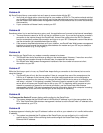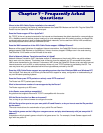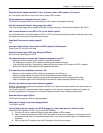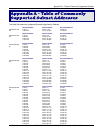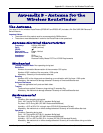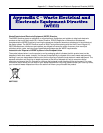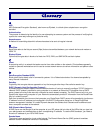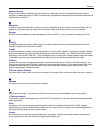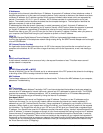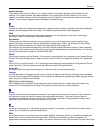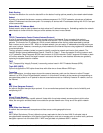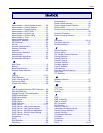
Glossary
Multi-Tech Systems, Inc. RouteFinder SOHO RF820/RF820-AP & RF830/RF830-AP User Guide (S000399E) 89
Network Address
The network portion of an IP address. For a class A network, the network address is the first byte of the IP
address. For a class B network, the network address is the first two bytes of the IP address. For a class C
network, the network address is the first three bytes of the IP address. In each case, the remainder is the host
address. In the Internet, assigned network addresses are globally unique.
P
Packet
A packet is a piece of a message transmitted over a packet-switching network. A packet contains the destination
address of the message as well as the data. In IP networks, packets are often called datagrams.
PING
A program that tests whether a particular network destination on the Internet is online (that is, working) by
bouncing a “signal” off a specified IP destination address.
Port Number
The term port can mean the connector on your computer or it can be thought of as a server number. Every
service that travels over phone lines and modems has a standard port number. For example, the World Wide
Web service uses the standard port number, 80 and the standard Telnet port is 23.
Port numbers are controlled and assigned by the IANA (Internet Assigned Numbers Authority). Most computers
have a table in their systems containing a list of ports that have been assigned to specific services. You can also
find lists of standard port numbers on the World Wide Web.
PPPoE
Point-to-point protocol over the Ethernet. It is a means of connecting from your premises to your Internet Service
Provider. Its main advantage is that it determines the need for the ISP to manage the allocation of IP addresses.
PPTP
Point-to-Point Tunneling Protocol – An IP tunneling protocol designed to encapsulate the LAN protocols IPX and
Apple Talk within IP for transmission across the Internet and other IP-based networks.
Private Key
Key used in public key crypto that belongs to an individual entity and must be kept secret.
Protocol
A formal description of message formats and the rules two computers must follow to exchange those messages.
You can think of protocols like languages. If two computers or devices aren’t speaking the same language to each
other, they won’t be able to communicate.
PPP (Point -to- Point Protocol)
PPP enables dial-up connections to the Internet and is the method that your network device connects to the
Internet. PPP is more stable than the older SLIP protocol and provides error checking features.
R
Router
A device which forwards traffic between networks. If you request information from a location on your network or
the Internet, the router will route the request to the appropriate destination. The router’s job is to listen for
requests for IP addresses that are not part of your LAN and then route them to the appropriate network which
may either be the Internet or another sub-network on your LAN.
S
Server
A provider of resources (e.g., file servers and name servers). For example, your RouteFinder provides Internet
access and is, therefore, an Internet Access Server.
SSID
An SSID is the name of a wireless local area network (WLAN). All wireless devices on a WLAN must employ the
same SSID in order to communicate with each other. SSIDs are case sensitive, consist of a sequence of
alphanumeric characters (letters and numbers), and have a maximum length of 32 characters. Example: Multi-Tech.



